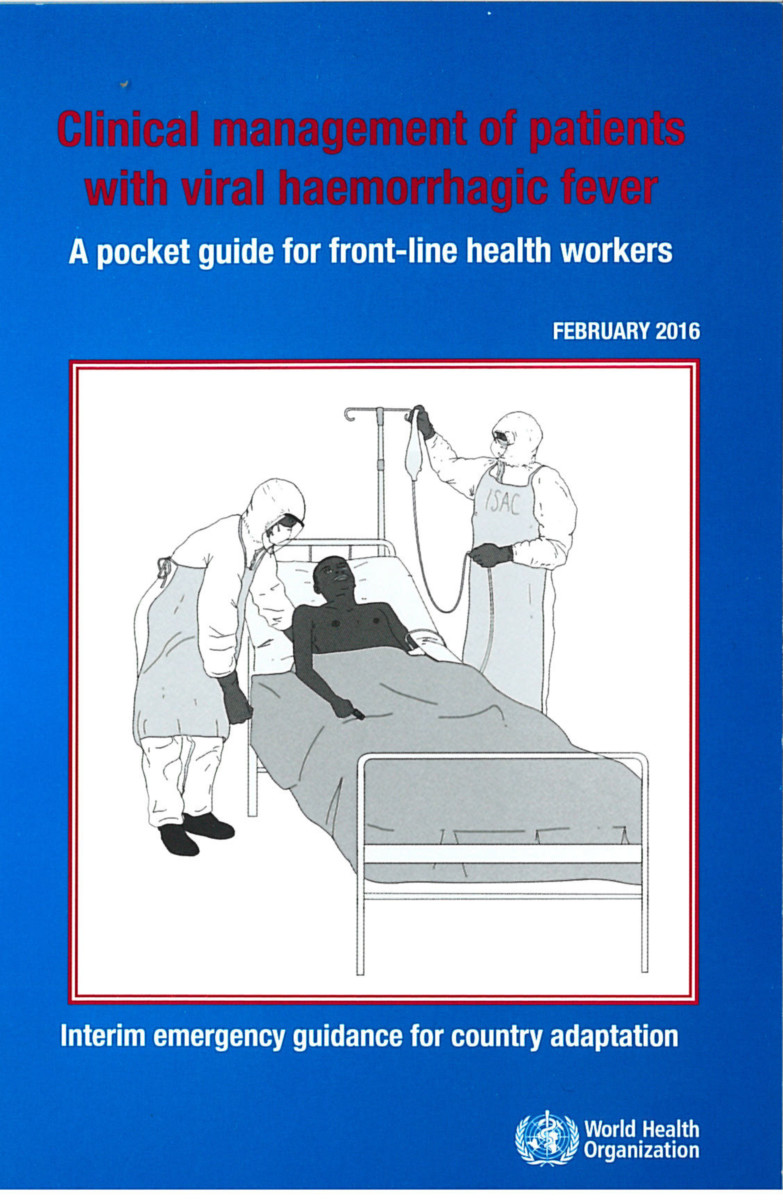Clinical Management of Patients with Viral Haemorrhagic Fever Edition 2
A Pocket Guide for Front-line Health Workers. Interim Emergency Guidance for Country Adaption
- Publisher
World Health Organization - Published
21st June 2016 - ISBN 9789241549608
- Language English
- Pages 203 pp.
- Size 4" x 8.5"
This is the second, updated version of the WHO's Clinical Management of Patients with Viral Haemorrhagic Fever: A Pocket Guide for Front-line Health Workers. Interim Emergency Guidance for Country Adaption, first published in March 2014.
This pocket guide provides clear guidance on current best practices for viral haemorrhagic fever (VHF), including both clinical management and infection prevention and control. Throughout, guidance is provided for the front-line health worker, focusing on triage and case definition, early and ongoing case management, infection control and subsequent hospital discharge. Recommendations come predominantly from published VHF guidelines (primarily consensus-based), and also are draw from algorithms for diarrhoreal diseases, sepsis and vaginal bleeding management from the WHO Integrated Management of Adolescent and Adult Illness (IMAI) and Childhood Illness (IMCI) guidelines and other current WHO normative guidelines. The rationale for including the management of GI loss from diarrhoreal disease and vomiting and the sepsis algorithms is that many patients in the West African Ebola epidemic have had severe diarrhorea and vomiting with dehydration and shock; others have this combined with severe sepsis or clinical pictures consistent with suspected pathophysiology and final common pathway of severe sepsis, with manifestations of increased vascular permeability, vasodilatation, multiple organ failure and shock. In addition, this book provides guidance on infection prevention and control to minimize nosocomial transmission and on the common clinical manifestations of VHF to help the front-line health worker increase his or her level of suspicion for VHF, particularly before an epidemic is recognized in the community. Separate notes have been added on the care of children and pregnant women.
Importantly, this document does not cover how to create a VHF treatment unit (that is, an isolation ward), and it also does not address community interventions to control transmission or respond to disease outbreaks. It is hoped that this manual will be complement such guidance and will strengthen the overall response to VHF outbreaks in Africa, contributing to the Integrated Disease Surveillance and Response activities necessary for compliance with international health regulations.
Although these guidelines concentrate on Ebola Virus Disease (EVD), referred to throughout this guide as Ebola, they also address Lassa fever, which is an endemic problem in Sierra Leone and also occurs in Liberia, Guinea and Nigeria, as well as two other viral haemorrhagic fevers that are transmitted person-to-person, Marburg and Crimean-Congo haemorrhagic fever. Country adaptation should address which VHFs are included in this pocket guide.
World Health Organization
World Health Organization is a Specialized Agency of the United Nations, charged to act as the world's directing and coordinating authority on questions of human health. It is responsible for providing leadership on global health matters, shaping the health research agenda, setting norms and standards, articulating evidence-based policy options, providing technical support to countries, and monitoring and assessing health trends.


